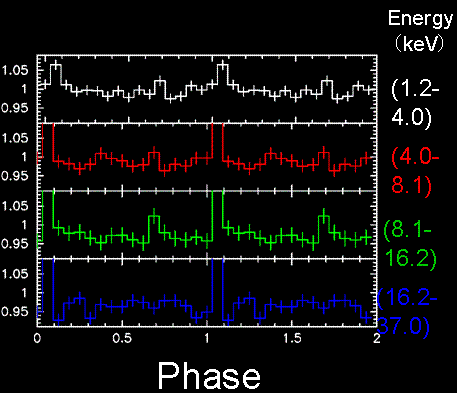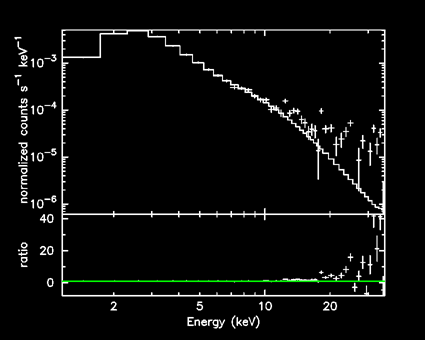► Japanese
► DARTS of the Month
A Fact Sealed for 16 Years


Credit: Kensuke Suzuki
On 2 September 1990, Japanese Ginga satellite observed an X-ray source named 4U0142+61. At the time, this source was considered to be a black hole candidate, because of its characteristic low-energy (low-temperature) X-ray energy spectrum.
Black holes are more massive than neutron stars, and their Schwarzschild radii are accordingly larger. Inner edges of the X-ray emitting disks surrounding the compact objects get greater as well for black holes. When disk inner edges are farther from the central objects, the disk temperature becomes lower; consequently, the X-ray energy spectra of black holes tend to be dominated by low energy X-rays compared to the case of neutron stars.
A graduate student who analyzed the Ginga 4U0142+61 data in 1990 understood that this source has a typical black hole X-ray energy spectrum. After that, very few scientists are interested in this data. Eventually, Ginga was descending, and at last the communication with the satellite was lost on 1 November 1991.
After Ginga mission life was finished, 4U0142+61 have twice received very high attention from scientists all over the world. In 1993, Italian researchers were analyzing the European EXOSAT data of 4U0142+61 taken in 1984, and discovered a pulsation at a period of 8.7 seconds. This indicates that the central star is rotating at the 8.7 second period, and the X-ray emitting star surface is playing "hide-and-seek" accordingly. Black holes never indicate such a pulsation, since they do not have hard star surfaces. 4U0142+61 turned out to be a neutron star, not a black hole!
Ten years later, another surprise came. In 2004, the European INTEGRAL satellite discovered that 4U0142+61 is shining very bright in the hard X-rays in 20-100 keV. Up to 10 keV, 4U0142+61 indicates a soft spectrum, gets dimmer for higher energies. However, at the same time, the source is emitting very strong high energy X-rays at above 20 keV.
Time flies; the student who first analyzed the Ginga 4U0142+61 data at ISAS has returned to ISAS as a professor after many years overseas. He has never forgotten Ginga 4U0142+61. The professor asked his student to re-analyze 4U0142+61 Ginga data after 16 years. If data are carefully analyzed and looked, both the 8.6875 second pulsation and the hard-tail above 20 keV are clearly seen!
This "sealed fact for 16 years" obtained from the Ginga archives was presented at the Japanese Astronomical Society meeting in March 2007. Today, 4U0142+61is believed to be a "magnetar", which is a neutron star having extremely strong magnetic fields. Magnetars are the strongest magnets in the universe. A typical magnetar has 100 billion times stronger magnetic fields than a typical magnet which we use in daily life.
April 2007





